Samaaro + Your CRM: Zero Integration Fee for Annual Sign-Ups Until 30 June, 2025
- 00Days
- 00Hrs
- 00Min
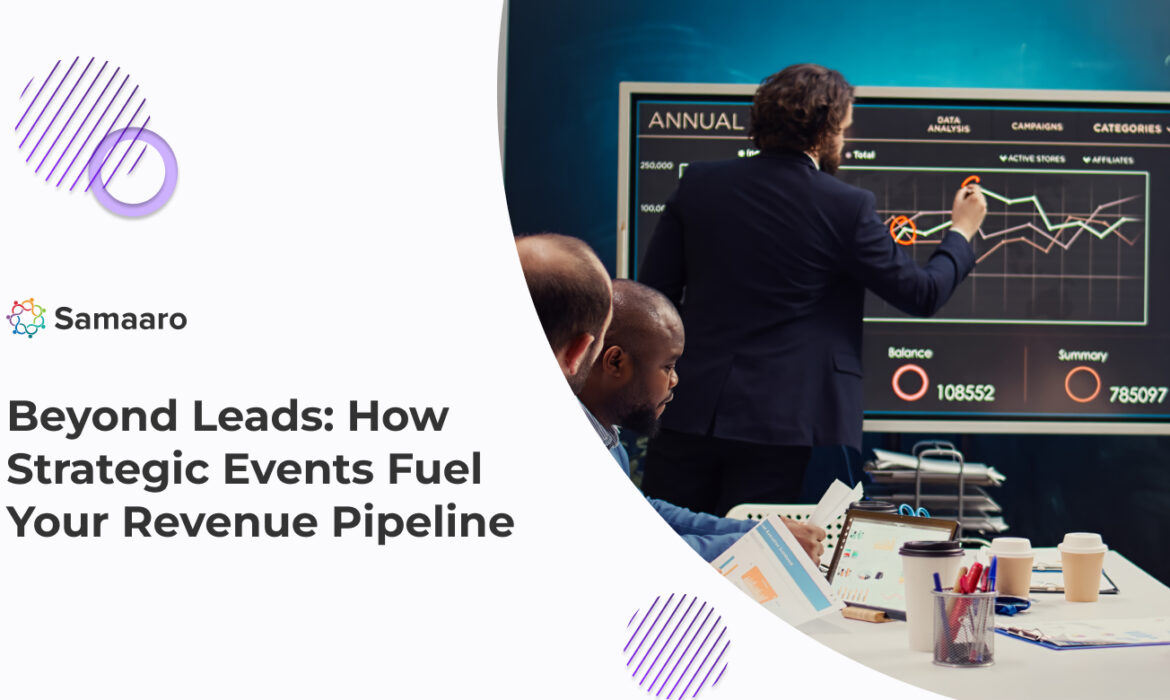
For years, the success of B2B events has been measured by a single metric: leads. The number of new contacts scanned at the booth or registrations collected from a webinar have long been used as a shorthand for ROI. But here’s the problem, leads alone don’t equal revenue.
The reality is, events do much more than just fill the top of your funnel. When strategically planned, they can influence every stage of the revenue pipeline, from creating awareness to accelerating decision-making, deepening customer relationships, and unlocking expansion opportunities.
In today’s complex B2B landscape, where trust, timing, and relationship depth matter more than ever, it’s time we reframe how we view the role of events. This blog dives into how events, when aligned with your revenue goals, serve as powerful tools to drive pipeline velocity and impact revenue far beyond the initial lead capture.
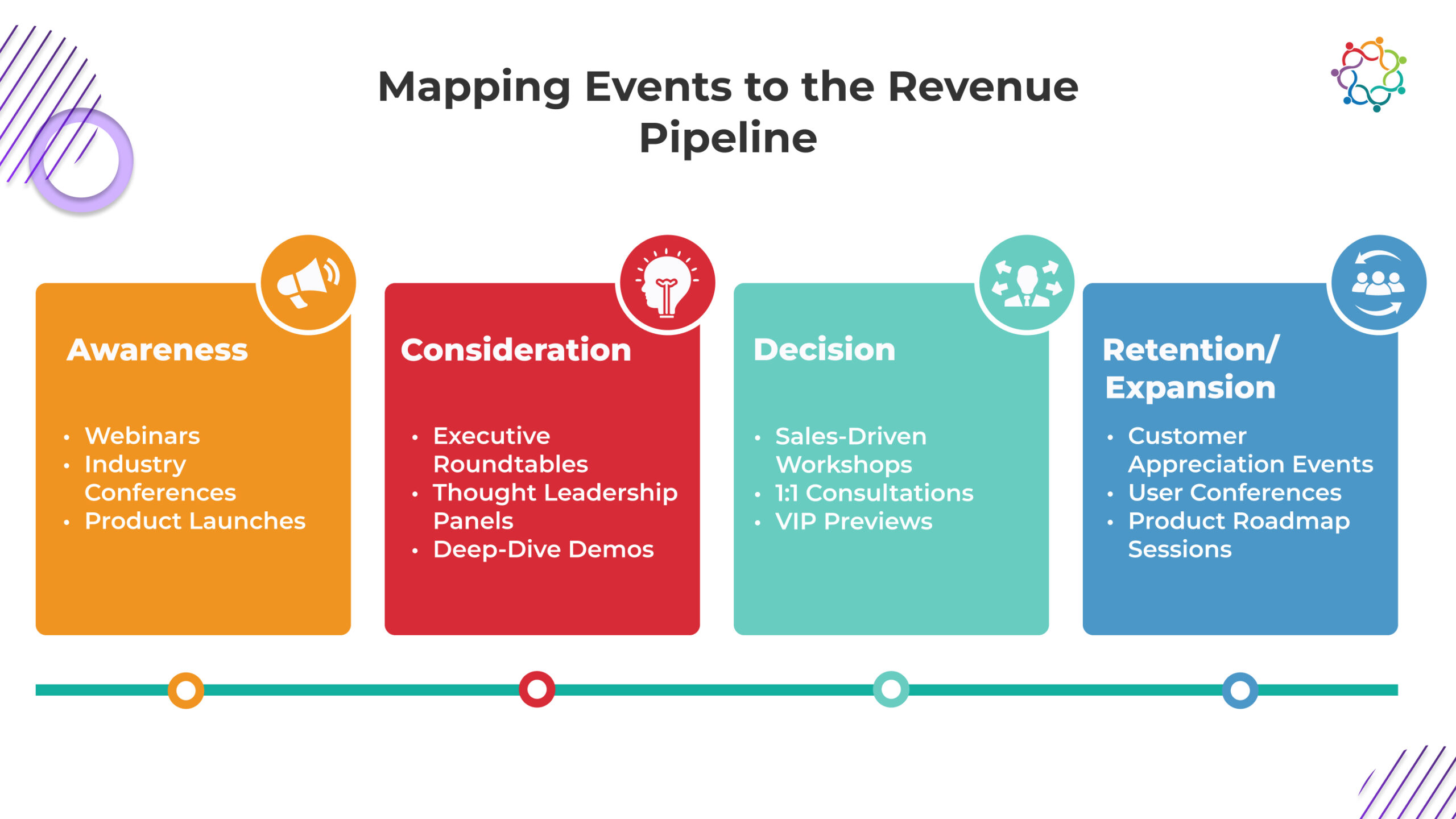
To understand the true value of events, we first need to zoom out and look at the full revenue pipeline. Typically, this pipeline includes stages like:
Now, imagine layering event types across this journey:
Unlike static content, events bring immediacy, interactivity, and human connection to your pipeline. They shorten sales cycles, unearth high-intent opportunities, and foster the kind of brand affinity that purely digital interactions often struggle to build.
By mapping your event strategy to the revenue pipeline, you shift the focus from collecting names to driving real business impact.
Once a prospect enters the consideration stage, the stakes get higher. They’re no longer just browsing,they’re actively evaluating solutions, comparing vendors, and looking for signals of trust, credibility, and value. This is where strategic events shine by accelerating the journey from interest to intent.
Events allow for live, two-way engagement that deepens connections in a way passive content can’t. Whether it’s through interactive formats like Q&A sessions, group discussions, or networking lounges, events provide the space for prospects to engage with your team and brand on a human level.
Personalized experiences, such as tailored breakout rooms, industry-specific tracks, or curated attendee groups, foster a sense of belonging and relevance. These moments build emotional rapport and trust, which are critical drivers in high-consideration B2B deals.
When your brand hosts or contributes to panel discussions, keynotes, or workshops, it positions your team as subject matter experts. Thought leadership content delivered live not only educates your audience but also signals confidence and authority.
Strategic use of customer success stories, product walkthroughs, or expert-led sessions at events can differentiate your offering from the competition and create an aura of trustworthiness that no sales deck alone can replicate.
Events are a prime opportunity to deliver information that goes beyond what’s publicly available. From sneak peeks into your product roadmap to deep-dive case studies and industry research, exclusive content shared in a live format increases its perceived value.
It also creates a sense of urgency, prospects feel they’re gaining access to privileged insights, which strengthens their connection to your brand and encourages quicker action.
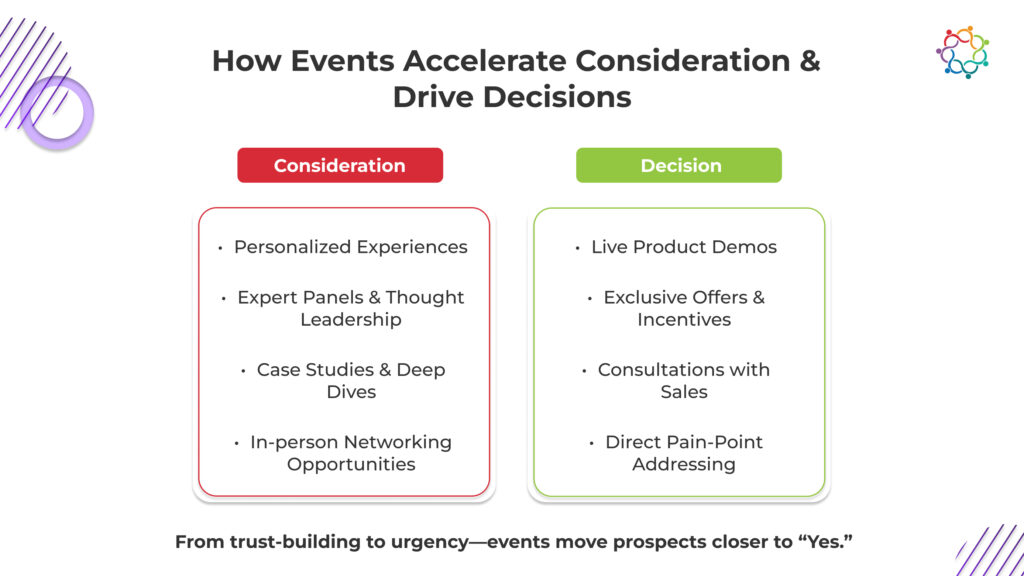
By strategically designing events to offer personalized engagement, thought leadership, and exclusive value, you transform the consideration stage into a powerful acceleration point in your pipeline. Events don’t just nurture interest, they convert it into buying intent.
By the time prospects reach the decision stage of your revenue pipeline, they’ve done their research. Now they’re looking for validation, confidence, and the right solution to meet their needs. This is where events can move the needle, not by generating leads, but by closing deals.
Strategically structured events can shorten the sales cycle, surface high-intent opportunities, and even convert on-site when aligned with sales efforts. Here’s how:
One of the most overlooked revenue opportunities at events is enabling intentional, sales-led interactions. Whether it’s through scheduled one-on-one meetings, dedicated consultation booths, or informal networking spaces, these in-person (or virtual) conversations give sales reps the chance to:
Event participation itself acts as a qualification marker, someone who shows up, engages in sessions, and speaks with your team is far more likely to be in-market than a passive lead from a landing page.
What’s working today:
Many revenue teams now coordinate on-site sales pods, mini teams equipped with tailored pitches, demo stations, and content relevant to the prospects attending. These teams don’t just collect contacts, they engage, qualify, and even set follow-up meetings before the event ends.
Events offer a unique opportunity to demonstrate your product in action,live, in context, and tailored to the prospect’s pain points.
This hands-on format increases retention and comprehension, while also making the solution feel more tangible and attainable.
Why it works: According to event marketing research, product demos presented in-person or via immersive sessions are 34% more likely to result in follow-up sales engagement than demos shared via email or landing pages.
Events create a moment in time,a window of heightened excitement and engagement. Smart marketers and sales teams capitalize on this by introducing event-specific offers that encourage fast action.
Examples include:
This approach works because it pairs emotional momentum with a practical incentive, pushing undecided prospects to take the next step.
Events are more than marketing showcases,they’re revenue conversion points. By enabling direct sales conversations, offering hands-on product experiences, and creating time-sensitive offers, events become high-impact environments for closing deals. When sales and event teams align around this intent, events move from being cost centers to true revenue drivers.
While many organizations focus heavily on using events to acquire new leads, some of the most significant revenue gains happen after the deal is closed. Events play a powerful role in deepening customer relationships, increasing satisfaction, and opening doors to upsell and cross-sell opportunities.
Here’s how strategic events can strengthen your post-sale pipeline:
Bringing customers together through exclusive user conferences, appreciation dinners, or regional meetups helps reinforce the value of your partnership beyond the transactional.
These events:
For B2B companies especially, fostering a sense of community and belonging is a long-term differentiator that reduces churn and increases brand affinity.
Example: SaaS companies like HubSpot and Salesforce invest heavily in annual user conferences because they understand that loyal customers,when engaged and informed,stick around longer and spend more.
Customer-focused events provide a natural setting to introduce new offerings, demonstrate value-add features, and identify expansion opportunities.
Tactics include:
These aren’t just sales pitches, they’re high-value conversations with an audience that already trusts your solution.
Pro tip: Equip your customer success and account managers with tailored talking points and collateral based on the attendee list and existing contracts. Expansion often starts with the right conversation at the right moment.
Events are one of the best places to spot, elevate, and activate brand champions. When customers are invited to speak on panels, share success stories, or network with peers, they’re more likely to:
Encouraging peer-to-peer engagement also increases trust among attendees, hearing value from a fellow user carries more weight than hearing it from a sales rep.
Real impact: Companies that consistently feature customers in event programming report higher NPS scores and referral rates.
Customer-focused events are not just retention tactics,they’re growth accelerators. When done well, they turn satisfied users into loyal advocates, uncover upsell opportunities, and solidify long-term revenue relationships. If you’re not leveraging events to deepen post-sale engagement, you’re leaving pipeline potential untapped.
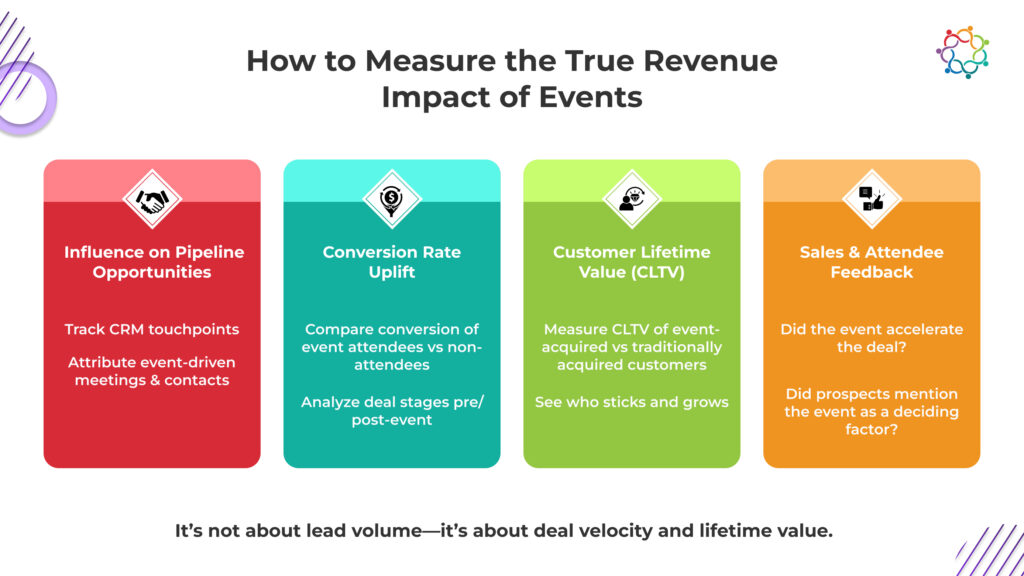
Most event reports stop at registration numbers and MQLs. But if your goal is pipeline growth, your metrics should tell a deeper story,one that shows how events contribute to actual revenue outcomes.
Here are key ways to measure that impact:
Integrate your event platform with your CRM or revenue operations system (e.g., Salesforce, HubSpot) to directly associate attendees with open opportunities. This helps you:
Example: If 30% of your closed-won deals in Q2 attended a March product webinar, that’s a clear indicator of impact,even if they weren’t new leads.
Beyond registrations, ask: Do people who attend your events convert at a higher rate?
Segment your pipeline and compare:
Often, you’ll find that engaged event participants move faster and convert at higher rates due to the relationship-building and trust developed during events.
Take a long view by analyzing whether customers who attend events:
This is especially valuable for subscription-based businesses or high-LTV accounts, where event engagement correlates directly with retention and growth.
Sometimes, data alone can’t capture the nuance. Make it a practice to:
These insights provide context for the numbers and help refine your event strategy over time.To prove the true ROI of your events, you need to look beyond surface-level metrics. When you connect event participation to revenue outcomes,pipeline influence, faster deal cycles, higher retention, you unlock a more strategic role for events in your go-to-market engine.
Embracing the Full Revenue Potential of Strategic Events
Events are far more than flashy brand moments or lead-generation campaigns. When strategically designed and aligned with your revenue goals, they become powerful levers across the entire pipeline, from building awareness to accelerating deals and deepening customer loyalty.
By rethinking events not as isolated marketing activities, but as revenue-driving touchpoints, organizations can unlock better ROI, tighter sales alignment, and more meaningful customer relationships.
And to truly make this shift, you need the right tools.
That’s where Samaaro comes in.
Samaaro is more than just an event platform, it’s a revenue enablement tool built for event marketers and revenue teams who want measurable impact. From CRM-integrated registration flows and real-time engagement analytics to lead scoring, sales enablement features, and post-event feedback tools, Samaaro helps you connect every event interaction to real pipeline outcomes.
So, if you’re ready to move beyond vanity metrics and turn your events into revenue engines, it’s time to rethink your strategy,and your toolkit.
Strategic events drive more than leads. They drive growth. Let Samaaro help you prove it.

Built for modern marketing teams, Samaaro’s AI-powered event-tech platform helps you run events more efficiently, reduce manual work, engage attendees, capture qualified leads and gain real-time visibility into your events’ performance.
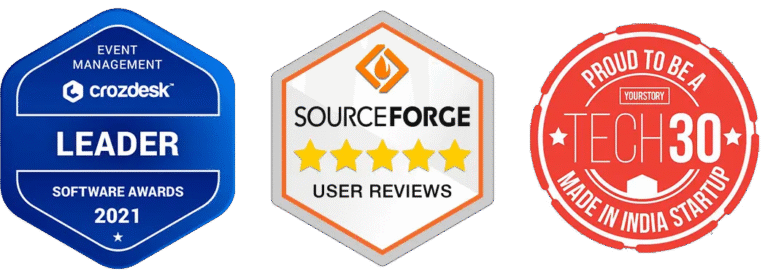
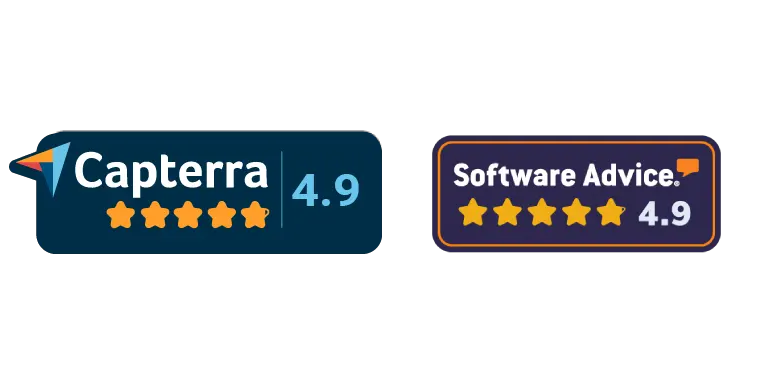
© 2025 — Samaaro. All Rights Reserved.